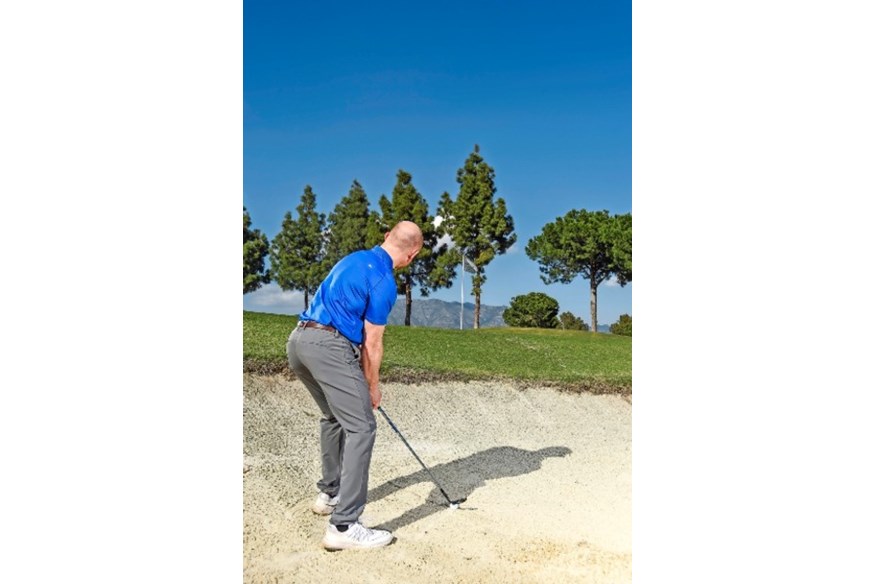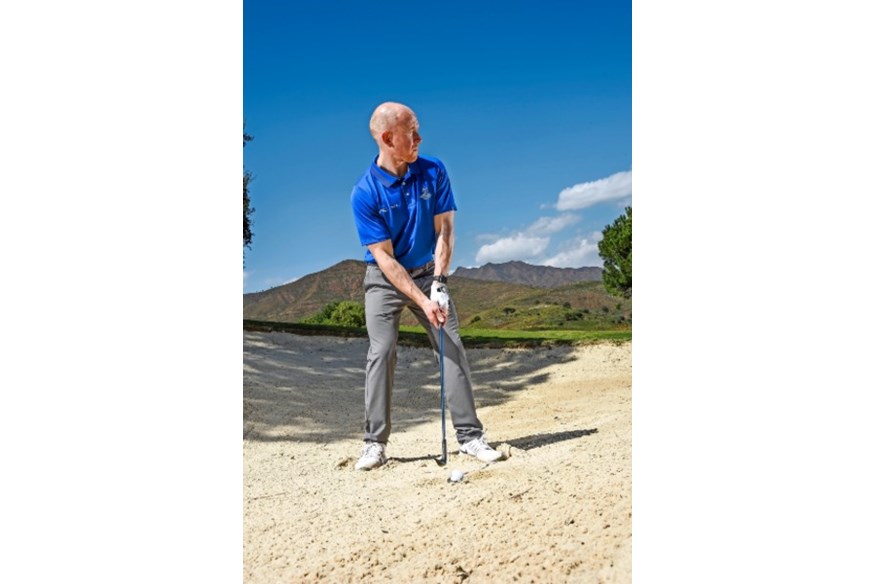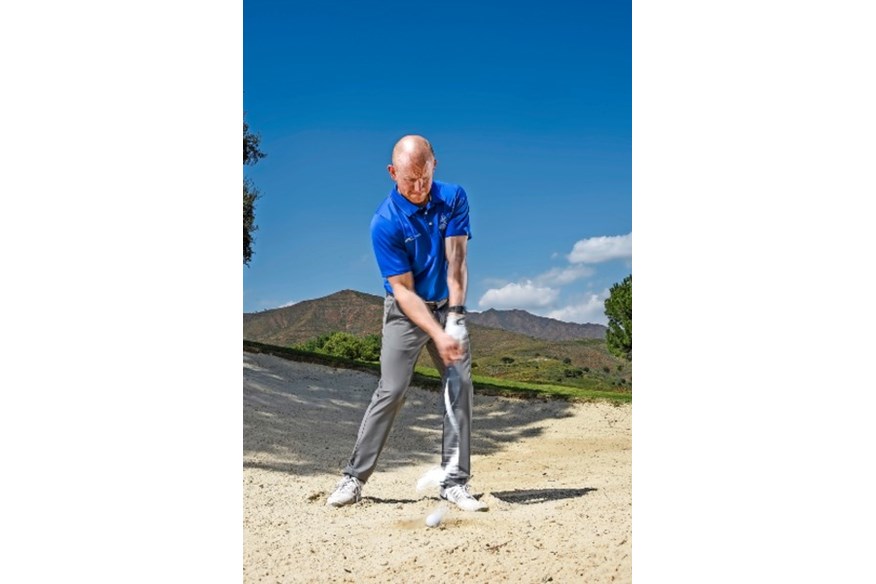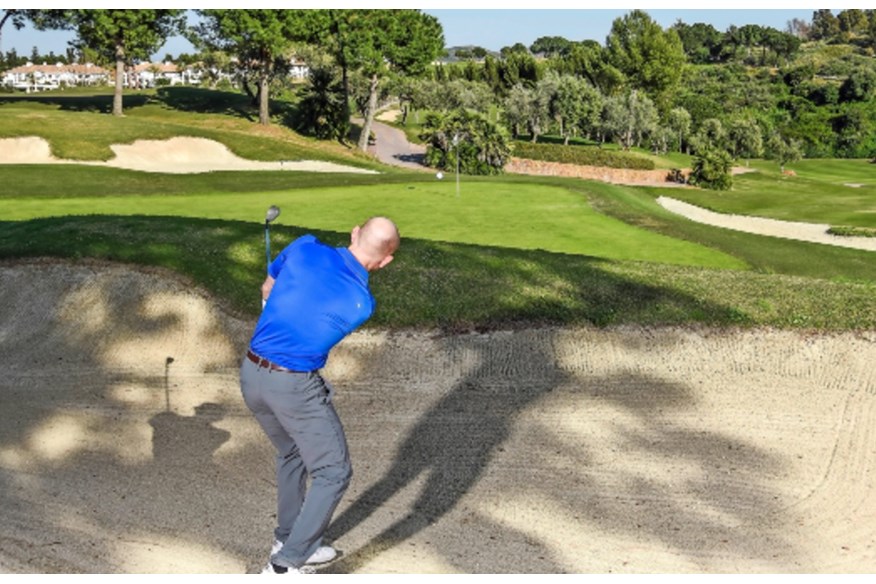Become a better bunker player with this five-point plan
Last updated:
Get on top of bunkers once and for all with this targeted five-point plan.
According to the statisticians, bunker shots constitute a relatively small proportion of the total shots we play during a typical round. But this doesn’t tell the full story. The mere sight of a heavily-trapped green or a particularly deep bunker can strike fear into the poor sand player, leading to over-cautious or mishit approaches, and it all takes its toll on the scorecard.
RELATED: Me And My Golf’s best-ever tips
This is why making bunker play one of your strengths is so important. It doesn’t just lead to more saved pars from the sand; it has a positive knock-on effect throughout your game, freeing you up to swing with commitment and attack more flags.
The five-point plan detailed here will give you that confidence. You can work on each element independently of the others, and each one will help you in itself; but your performance will really start to kick in when you put them all together to create a consistently strong bunker approach.
Good luck!
1. Begin by improving your focus
There are two elements to focus; work on both intention and attention.
1. Set a clear intention
The starting point for every successful sand effort is clarity. Create an indelible mental picture of the shot you want to play and your brain can get to work on how that might be achieved. The stronger the messages you send your brain, the better it will serve you, so bring in these elements to form that clear picture of your intention:
– Impact: How will it sound? How will it feel?
– Trajectory: Will the ball come out high, low or in between? Will the ball run out or pull up quickly?
– Landing point: Where will the ball pitch on the green?
– Next shot: What shot will you leave yourself? Does short, long, left or right leave you that nice straight-uphill putt?

2. Place your attention
Once you’ve established a clear intention, the second element of focus is to place your attention on something useful for successful execution of the shot. You have two options here, which you can combine if it brings results:
– External attention
This is something outside your body. It could be the club’s entry point into the sand, or the launch window you want to hit the ball through. External attention often has the advantage of locking your focus into the task and the situation. Experiment to see how successful you are with it, but always make sure the focus of your attention is relevant to the shot you’ve pictured.
– Internal attention
This attention is body related, so could involve elements like balance, wrist hinge or the speed of the swing. It can work well when you feel you have a particular thought that triggers success, but with this more technical focus it’s important not to lose sight of the shot you are trying to play. If you prefer internal intention, setting a very strong, clear picture of the shot takes on even more importance.

2. Develop a versatile address position
Demanding varying degrees of launch, carry and roll, no two bunker shots are the same. With your address position influencing your ability to develop height and spin, it’s important you take a similarly flexible approach to how you set up to the ball. Prioritise these three areas:
– 1 Ball position
This should always be forward of centre to place the swing’s low point – opposite the lead chest – under the ball. But there is room for some flexibility. Further forward (up to the lead toe cap) adds height and reduces roll; further back towards centre-stance sends the ball out lower with more run.
– 2 Clubface aim
When you have the face loft of a sand or lob wedge, the influence of face aim on the ball’s starting direction is less prevalent than with longer clubs. That means you can open the face to add loft, height and spin without sending the ball excessively offline. Opening the face also increases sole bounce, aiding a shallow, clean contact in softer sand.
– 3 Body aim
Opening your stance – that’s aiming left for the right-hander – encourages you to cut across the ball, developing more height, spin and less roll-out. Squaring up, or even standing slightly closed, will encourage a more driven flight with more run – more suited for when you have a longer bunker shot across a green.

3. Control your balance to control strike point
As you will know, on greenside bunker shots we don’t hit the ball itself; instead the ball rises on the sliver of sand we take from underneath it. Ideally we’ll strike the sand about an inch behind the ball on a shallow angle, and to achieve that we need to control the swing’s arc and low point. This means avoiding sway or lateral movement. Lock in to your lead side to achieve it.
– 1 Contact point
The clubhead is at its lowest as it swings past your lead chest. We place the ball level with the lead chest at set-up to help the clubhead get under the ball at impact. But if your chest moves during the swing, so does this low point and your strike becomes too heavy or too clean.
– 2 Lock in to your lead side
With your weight spread 50-50, you are more at risk of swaying right or left; but by setting 65- 70% of your weight on your front foot – and angling the toe and knee forward – you lock your weight and balance into one single position, holding your chest and low point constant as you swing.

4. Swing it in reverse
With the normal, full golf swing, we’re often told to “start from the ground up”, driving everything with the body and letting the clubhead come along last as a mere passenger. When it comes to bunkers, the opposite feels will actually work far better. Here’s the order of play:
1. Club first
Start from a half-backswing position. Feel your lead arm is near parallel with the sand and your wrists have cocked the clubshaft to vertical. From here allow the feeling of the wrists uncocking, the clubhead swinging down towards the sand, to start your downswing.

2. Arms join in…
As the clubhead moves down and the wrists uncock, your arms will naturally become involved in the club’s delivery. But try to stop your body wanting to contribute; your feeling should be of the swinging club and arms uncoiling your body.

3. Torso responds…
Through the ball, the feel remains one of the club and arms driving the forward momentum. Your core should respond rather than lead. However, the swinging arms cause the shoulders and chest to rotate, though the hips and lower half remain quiet and supporting.

4. Pelvis rotates…
Pulled into action by the rotating chest and upper body, the hips and pelvis only really get involved towards the end. A good sequence sees your chest and belt buckle facing the flag with your arms, in front of your chest, extending down the target line.

5. Get your speed and rhythm right
This final section relates to the overall rhythm and tempo of your motion, and it’s not so much about technique as about experimentation. High-performing golfers take ownership of the flow of motion in their actions, adjusting it to the shot and the situation. With some trial and error, you can develop the speed and rhythm that works best for you, relative to the shot. Focus on two specific areas:
1. Speed and even tempo
Begin by making swings where your backswing tempo matches your downswing tempo. Use a scale of 1-10, 1 being slow and 10 being fast. Pick a number, ensuring that by the end you’ve tried slow, medium and fast tempos. Hit six-to-12 balls at that speed, changing targets with each shot.
By the end of the session you should be beginning to get a feel for how a certain speed seems to work best for a certain shot length or trajectory. There is no right or wrong about this; you are simply getting used to the fact that swing speed and tempo is something you can adapt to improve results in different situations, and working out how.
2. Speed variations
Now take the experiment to the next level by changing backswing and downswing tempos. Try slow-to-fast, and quicker back to slower through. Use that 1-10 scale again, perhaps starting with a 3 back and 7 through then a 7 back and 3 through. Again, hit up to a dozen balls at different targets with each combination.
As before, monitor how mixing up backswing and throughswing speeds can create different effects and results. Perhaps you will find a slow-back, fast-through action works better for 30-yarders, or the opposite helps you die the ball on to a downslope. Your results will be specific to you, but make sure you take note of the numbers that seem best suited to different situations. Now you have flexible and proven solutions to the variety of bunker challenges you will face out on the course.












